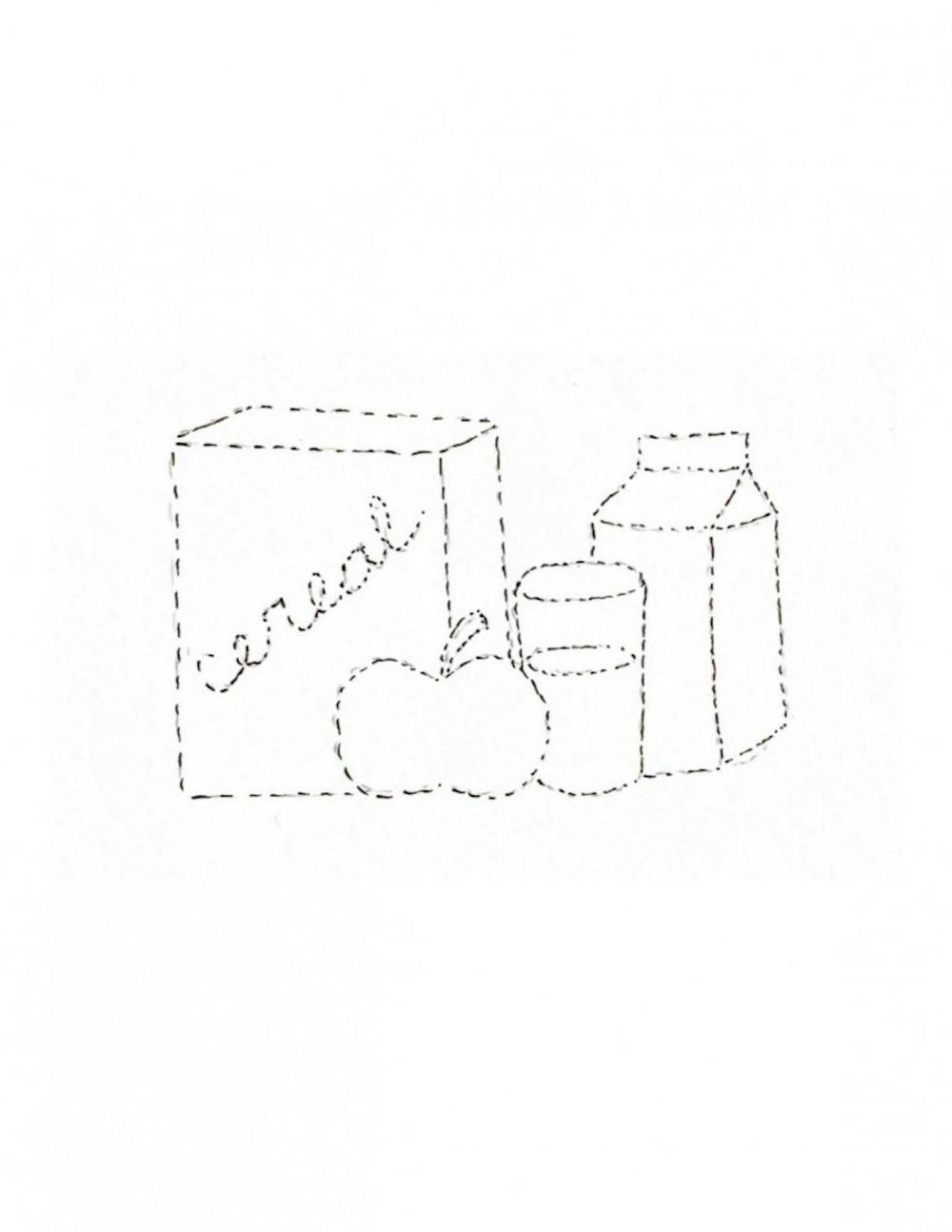While headlines over the past few weeks have drawn attention to mile-long lines outside food pantries and the difficulties people have had receiving benefits from the (already insufficient) Supplemental Nutrition Assistance Program (SNAP), there is, in reality, nothing “new” about this news. Rather, Covid-19 has exposed and amplified pre-existing inequities that run rampant in our national food system. College students, many of whom are on scholarships and have no income of their own, have always been particularly vulnerable to food insecurity and are now even more susceptible. However, over the past several months, we have been working with our classmates not only to assess the prevalence of food insecurity among our peers (both during the school year and while at home), but to put together a resource guide for those who are hungry.
The U.S. Department of Agriculture (USDA) defines food security as “access by all people at all times to enough food for an active, healthy life.” Food insecurity, therefore, refers to the lack of that access. Unlike hunger (a condition that often results from food insecurity), this definition encompasses several causal factors: dependability and consistency of food access, quantity and quality of food available, and the ability of all members of a household to meet their nutritional needs. The USDA conducts an annual survey to measure these conditions.
This past fall, one of us took Professor Molly Anderson’s class on Hunger, Food Security and Food Sovereignty. The class sent out a questionnaire to the Middlebury student body composed of our own unique questions, modified ones from the USDA and those inspired by a similar project undertaken at the University of Vermont. The questionnaire received 330 responses and found that 9.7% of respondents either sometimes or often didn’t have enough to eat at school, with about half of those individuals experiencing this insecurity while classes are in session and half while on break. The results also showed that 5.4% of students either often or sometimes worried that their food would run out before they had money to buy more while they were at home.
This initial survey left open many further areas for research; for instance, it’s unclear why some students who are on the meal plan are food insecure while dining halls are open (perhaps because dining halls aren’t able to provide them with sufficient food that is culturally-appropriate and/or adheres to dietary restrictions). Other findings from the survey were more definitive; for instance, it’s clear that the college must do better to provide students who stay on campus for breaks (when dining halls are closed) with the resources that they need to stay well-fed.
While the above percentages may not seem that significant, it’s critical to remember that ultimately, states of food security reflect the collective. To be food secure requires “access by all people.” Thus, on our local level, we cannot say that Middlebury students are a food secure population if any of us lack consistent access to sufficient and nutritious food. Similarly, the U.S. cannot claim to be a food secure country when millions of Americans lack that access to varying degrees.
Despite students’ struggles, food insecurity remains a relatively invisible issue at Middlebury. Many likely assume that with an unlimited meal plan, no student can go hungry. We must therefore begin by increasing the visibility of the problem in the Middlebury community, not to mention the accessibility of the resources that already exist. Unbeknownst to many students, there are a number of incredible organizations, offices, businesses and individuals that offer aid to the food insecure. We encourage students to check out our resource guide to see the food-related resources that are available to them.
This resource guide was originally crafted for use during the academic year and over school breaks. In light of the coronavirus pandemic, however, it has been modified to address students’ current situations. While we are doing our best to adjust the document in response to the pandemic, we are in a dynamic situation with new resources being made available constantly and pre-existing organizations that are working to meet novel needs.
We recognize that the contents of this guide, much of it specific to Vermont, may not be as useful as under normal circumstances. That said, we point students toward Feeding America, a national hunger-relief organization, which has a tool on their website to connect those in need with their closest food bank. For those who do remain on campus and in the town of Middlebury, we hope that this guide is especially useful to you during these challenging times when the regular food offerings on campus are reduced. We will continue to update, distribute and publicize the guide when we return in the fall.
Even though the U.S. may be one of very few countries in the world that doesn’t explicitly acknowledge the right to food in its constitution, morality and common sense can guide how we act locally. Now more than ever, it’s time to recognize that every person deserves food security.
We welcome any questions about or suggestions to our guide, which can be found at go.middlebury.edu/foodresources. Submit feedback here.
Grace Weissman and Bella Pucker are members of the class of 2021.5. Molly Babbin is a member of the class of 2022.
Covid-19 exposes long-existing patterns of student food insecurity

Comments



